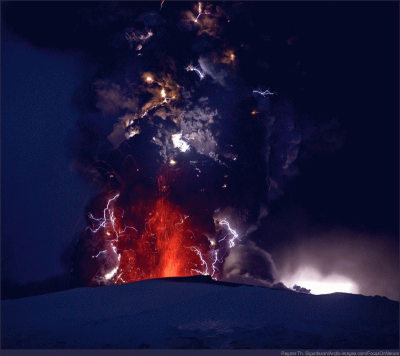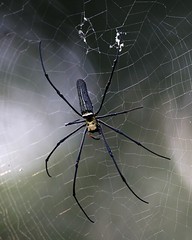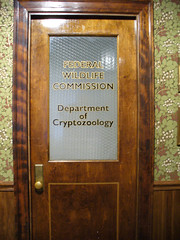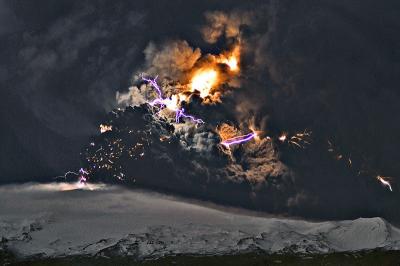My loyal friends and readers, I apologize for the interruption (again). We’re now back for the summer – get ready for some uninterrupted weirdness!
Category: Uncategorized
Americans tired of political incivility
This isn’t exactly bizarre, but it is nonetheless interesting. American political discourse, over the past several years, seems to have escalated out of control. Negative ads? Puh. These days we have congressmen being spit on, racial slurs hurled at African American congressmen (who also happen to be heroes of the civil rights movement), and death threats (including cut gas lines and a coffin left in a congressman’s yard), among other things. What’s interesting to me, though, is that not only are Americans tired of this incivility, they want compromise on a number of issues.
USA Today’s top story reports:
More than two-thirds in a nationwide poll taken for the
study said Americans “should be ashamed of the way elected officials
acted” during the recent health care debate. Half said the tone of
politics has declined since President Obama was elected; just 10% said
it has improved.Those surveyed were split over whether it was
more important for a politician to be willing to stand firm in support
of principles or be able to compromise to get things done.When asked about seven specific issues, however,
solid majorities said elected officials should find compromise solutions
on all but one of them, abortion. About two-thirds thought compromises
should be found on immigration and climate change legislation, two of
the most contentious issues now being debated.There were significant differences by ideology,
however. Liberals by 59%-36% favored the ability to compromise. Conservatives‘ views
were a reverse of that: By 60%-34%, they preferred a willingness to
stand firm.The telephone survey of 1,000 people, taken by
Zogby International March 24-29, has a margin of error of +/– 3.2
percentage points.
I find it particularly striking that liberals are significantly more likely to seek compromise than conservatives. You can read more here.
Iceland’s fiery volcano
… resembles something out of Mordor. Take a look at this absolutely stunning photograph of the Eyjafjallajokull volcano taken by photographer Ragnar Th. Sigurdsson:
You can see more here. In the meantime, planes are still grounded across Europe, and the British Royal Navy is contemplating a reenactment of Dunkirk to “rescue” the hundreds of thousands of Britons stranded on the continent.
Additional photographs from a different source can be found here. They are equally stunning. These photographs bring to mind words like “apocalyptic.” For example:
A dearth of updates.
Hello friends. I apologize for the desperate lack of updates – I’ve been totally wrapped up in my senior thesis for the last few weeks. The good news, though, is that I turned it in yesterday – so expect the usually steady stream of internet weirdness, bizarre facts, and strange news to resume soon.
The last unclaimed land on Earth
It might be hard to believe that in the year AD 2010, there is still land that remains unclaimed by any nation. But such is the case. Via Neatorama:
Marie Byrd Land and Bir Tawil Triangle are the only
two land areas on Earth not claimed by any country.Marie Byrd
Land is a portion of Antarctica so remote that no country in the
world bothered to claim it. It’s the single largest unclaimed territory
on Earth.
Bir Tawil Triangle
likely has no owner because of some administrative snafu. First of all,
despite of its name, it’s not a triangle at all. In fact, it has a
trapezoidal shape. In 1899, when the British drew the map between Egypt
and Sudan, Bir Tawil was put in Sudan’s territory (which Egypt
accepted). However, in 1902, when Sudan drew its own map, it put Bir
Tawil on the Egyptian side! So far, neither country bothered to lay
claim to this patch of land.It was no big loss, however, as Bir Tawil is full of sand and a whole
lot of nothing.
Some book and library-related items
Boing Boing has put together an interesting little list of some literary things:
– Publishing
Food #2 – Edible Geography looks at miniature cookbooks and
chocolate letters and robotic food chefs.
– Fore-Edge book painting comes in classic
and modern forms
– Brian
Dettmer’s book art
– American Woodworker shows people how to make a Lumber Library
to show off fancy woods. Another
Wood Book.
– Typo of the Day for
Librarians – a compilation of common library catalog typos.
– The
International Edible Books festival album pages always make me
hungry, for words and snacks
– A few more library
mash-ups from an old MetaFilter post. And BibliOdyssey is always good
for more biblioporn.
In memory of Steve
Cisler, Apple’s digital librarian and all-around awesome guy.
There’s more here.
See also this interesting list of famous literary drunks and addicts.
There are spiders on your internet.

Image by Lip Kee via Flickr
On its surface, the internet typically seems like a friendly place – or at least generally neutral. You’d hardly expect to find an infestation of spiders online (although other sorts of infestations would probably be unsurprising).

Image via Wikipedia
Unbeknownst to most casual browsers, though, the World Wide Web is (fittingly, I suppose) teeming with them. Also known as web crawlers (or bots, web scutters, or automatic indexers), these spiders are computer programs that trawl the internet for content and report their findings back to search engines and other similar services. Without web spiders, search engines like Google would be forced to assign humans to browse through and catalog each and every existing web page by hand – an impossible task, given that billions of different web pages exist.
Instead, though, search engines can deploy these automatons to do their dirty work for them (and depending on what parts of the internet you frequent, I’m sure it can be very dirty work). Most webmasters are familiar with the scurryings of internet spiders; they typically come during the night, and poke and prod and crawl over and under each part of your website. Adverbly.net has been visited by at least nine different “robots/spiders,” including Googlebot, Yahoo Slurp, Ask, Relevant Noise, and several somewhat-creepy “unknown robots” identified only by short strings like “robot,” “spider,” or “bot.” I can’t help but wonder who directed these unknown bots to crawl this website; one visited nearly 200 times.
If you’re interested in learning more, you can visit the quite-extensive Wikipedia page about web crawlers, or Google’s helpful-but-brief Googlebot FAQ.
Some say that a spider in your house isn’t all bad, because spiders hunt and kill house centipedes. I’ll take house spiders over house centipedes any day. And I definitely don’t ever want to meet an internet centipede.
A roundup of interesting / unnerving science news
Today’s science news is rife with interestingly unsettling stories. For instance:
- Apparently, hundreds of small earthquakes have been rattling Yellowstone National Park for the last two weeks. This is especially unnerving considering another recent article about how scientists are worried that the Haitian earthquake indicates increased seismic activity in this part of the world.
- The body takes abstract thoughts literally
- Bad news for those of you who’ve pissed off bees: they can hold a grudge. It seems that honeybees can remember human faces.
- Bad news for those of you who’ve pissed off robots: it seems that robots have evolved to learn hunting and cooperation.
- octopuses (octopi/octopodes?) are pretty smart. I don’t recommend pissing them off.
This concludes our transmission. Until next time!
Danny Casolaro and the Octopus
Image via Wikipedia
Danny Casolaro, born in 1947 in McLean, Virginia, was a freelance writer and investigative journalist. And the sentence you just read is the only part of this story that isn’t bizarre.
Danny Casolaro was found dead in a Martinsburg, West Virginia hotel room bathtub in 1991. His wrists had been slashed 10-12 times, and he’d apparently left a note.
Casolaro’s family, though, insisted that his death had not been a suicide. He’d been squeamish about blood his whole life, and to slash his wrists made no sense to them. He’d given no indication that he’d wanted to kill himself. For several months prior to his death, Casolaro had received threatening, menacing phone calls from unknown callers – one promised to “cut his body and throw it to the sharks.” And his trip to Martinsburg, West Virginia had a strange purpose. He’d intended, according to Wikipedia, to
meet a source about a story he called “the Octopus.” This centered
around a sprawling conspiracy theory involving an international cabal, and
primarily featuring a number of stories familiar to journalists who
worked in and near Washington, D.C. in the 1980’s–the Inslaw
case, about a software manufacturer whose owner accused the Justice
Department of stealing its work product; the October Surprise theory
that during the Iran hostage crisis, Iran
deliberately held back American hostages to help Ronald
Reagan win the 1980 presidential
election; the collapse of the Bank of Credit and
Commerce International; and Iran-Contra.[2]
There certainly seems to be at least a kernel of something sinister and mysterious at the heart of Casolaro’s investigations. The Inslaw case led to three trials in federal court and two congressional hearings; the Justice Department was accused of “deliberately attempting to drive Inslaw into Chapter 7
liquidation; and of distributing and selling stolen software for covert intelligence operations
of foreign governments such as Canada, Israel, Singapore, Iraq, Egypt,
and Jordan; and of becoming directly involved in murder,” among other things. Inslaw, which had developed a people-tracking program called “Promis,” claimed that the government had stolen the software, created a secret backdoor in the program, and resold it to various entities.
And shortly before his death, “Casolaro told people that he was nearly ready
to reveal a wide-ranging conspiracy spanning the Inslaw case,
Iran-Contra, the alleged October Surprise conspiracy, and the closure of
BCCI.[7]
David Corn writes in The Nation that the papers Casolaro left
behind reveal few clues, except that he was in over his head, but was
tenacious.”
The day before he died, Casolaro was sighted with “a man described by a waitress as ‘maybe Arab or Iranian.'” In his alleged suicide note, written on a single sheaf torn from a legal pad, he wrote “To those who I love the most: Please forgive me for the worst possible
thing I could have done. Most of all I’m sorry to my son. I know deep
down inside that God will let me in.”
At Casolaro’s funeral, “as the ceremony drew to a close, a highly decorated military officer in U.S. Army dress reportedly arrived in a limousine.
Accompanied by another man in plain clothes, the military man
approached the coffin just before it was lowered into the ground, laid a
medal on the lid, and saluted. No one recognized either man and, to
this day, they have never been identified.”
Some enterprising conspiracy theorists have attempted to pick up the pieces and finish Casolaro’s work; a quick Google search will reveal theirs. It’s unlikely, though, that anyone has successfully unraveled Casolaro’s “Octopus” – and we’ll probably never find out whether it was an actual conspiratorial entity, or merely the product of a suicidal mind.
Today’s round-up of strangely captivating things
The last round-up was successful, so here’s another bunch of odd odds and ends from around the free world:
- “Ice Cube” dispenser
- Huntsman spiders are tough to catch
- A gallery of strange places on Mars
- Chupacabra body turns out to be hoax
- The weird experiences of 7 (non-Chupacabra) dead bodies
- Urinal fountain art installation
- Scum river bridge
- Tea submarine
- Make your own mossarium
- Crocodiles recognize their own names
There’s a lot today. All interesting stuff! Check it out, if anything catches your eye.
Mysterious creature savaging animals and terrorizing villagers in Northwest England

Image by smiteme via Flickr
There are as many as 100 million species in the world. Of these, perhaps 2 million have been discovered, identified, and assigned a scientific name. Each year, scientists find and classify thousands more species from every kingdom and phylum.
Scientists aren’t the only ones on the lookout for undiscovered species and unidentified creatures, though. Around the globe, people try to name and understand animals that are unknown, frightening, or bizarre. Common animals or unknown species are often misidentified as monstrous and sometimes become associated with folk stories and creatures of legend and mythology. Some even attempt to track and discover “legendary” animals like the Loch Ness Monster of Scotland or the Chupacabra of Latin America; the pseudoscientific study of these “hidden” creatures is called cryptozoology.
Why am I writing about this? Because a village in Lancashire, England is apparently being terrorized by an unidentifiable creature that has come to be called the “Buckshaw Beast.” From the Daily Mail:
Some say it resembles a prowling hyena, others a ferocious wolf.
While there are those who have seen the mysterious creature menacing Buckshaw Village and describe it as a terrifying cross between a wild boar and some kind of big cat.
Whatever it is, it has been blamed for mauling several deer to death, and one resident’s Alsatian dogs were left quivering with fear after a particularly close encounter.
Now one intrepid villager has taken a photograph of what locals have dubbed the Buckshaw Beast, sparking a feverish online debate about what exactly it might be.
The initial consensus was that it is a wild boar forced out of the countryside by the cold weather as it strives to find food, but experts have said one would be unlikely to kill deer.
It certainly sounds frightening. My guess? That it is a boar after all – but who knows? You can read the whole article here.
Scientists tie light into a knot
From LiveScience:
Like your shoelaces or electrical cords, light can get twisted into
knots. Now, scientists have used a computer-controlled hologram and
theoretical physics to turn a light beam into pretzel-like shapes.
The twisted feat not only led to some pretty cool
images, but the results have implications for future laser devices,
the researchers say.
“In a light
beam, the flow of light through space is similar to water flowing
in a river,” said lead researcher Mark Dennis of the University of
Bristol in England. Even though the light from something like a laser
pointer travels in a straight line, it can also flow in whirls and
eddies, Dennis explained.
Read more here.


![Reblog this post [with Zemanta]](http://img.zemanta.com/reblog_e.png?x-id=1c6698cc-c5b6-4b09-943c-95ad513a3c03)
![Reblog this post [with Zemanta]](http://img.zemanta.com/reblog_e.png?x-id=d5006ef2-c3ea-4b99-acd3-1b770fa1b3d7)
